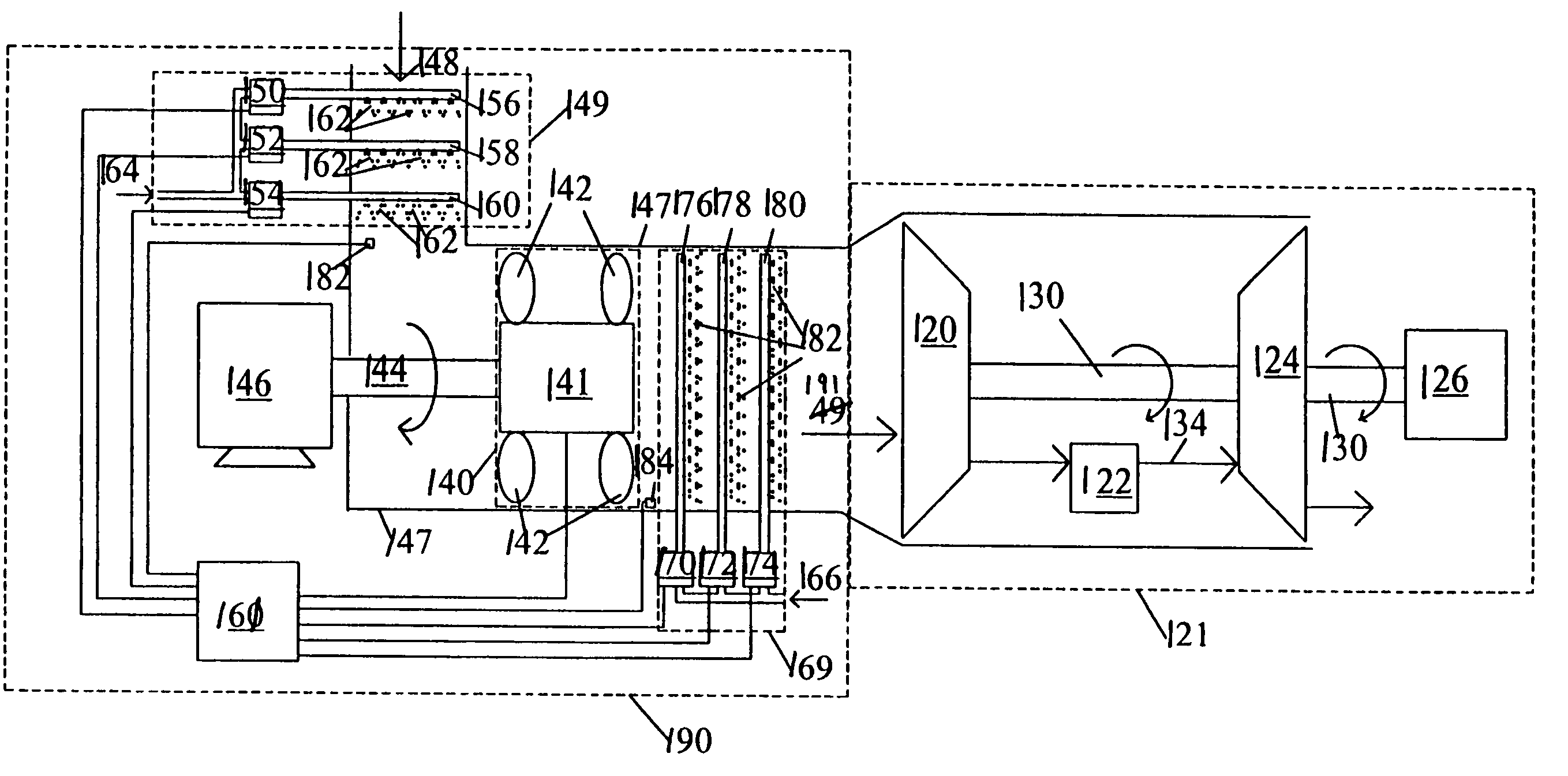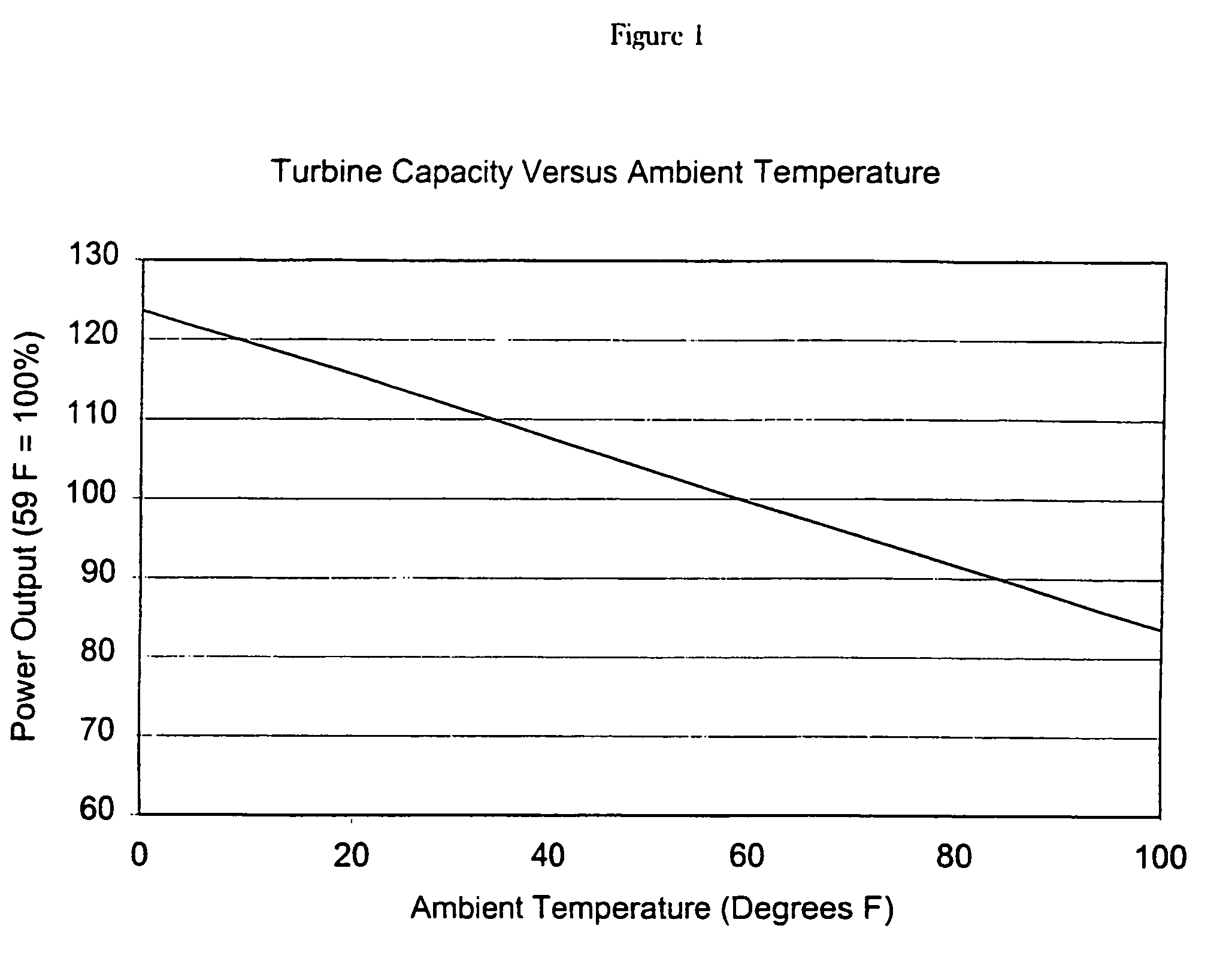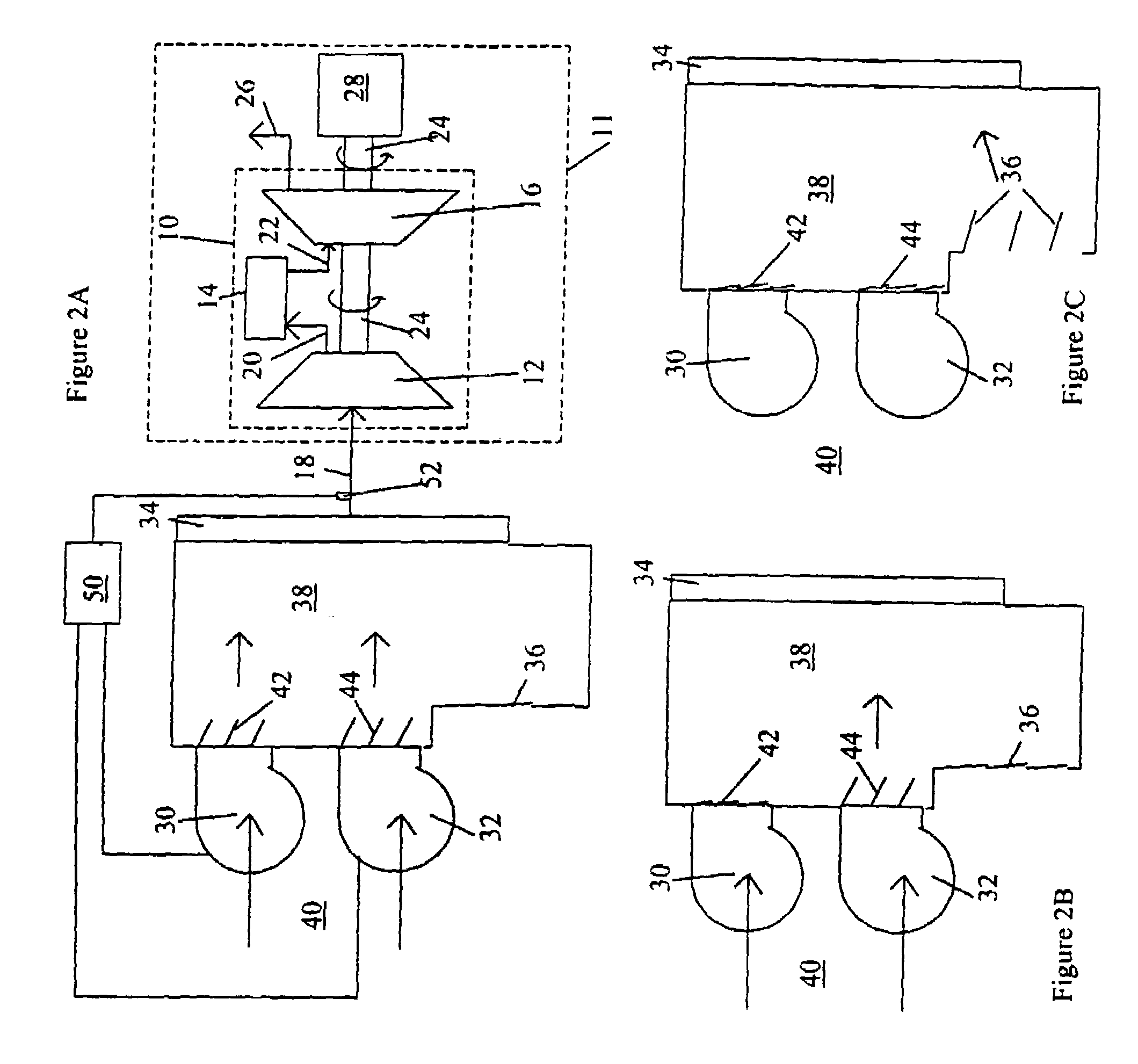Supercharging system for gas turbines
a gas turbine and supercharging technology, applied in the direction of efficient propulsion technologies, machines/engines, mechanical apparatuses, etc., can solve the problems of limited use of new turbines, inability to allow the turbines to run at their full design capacity, and special troublesome characteristics, so as to increase the turbine capacity and reduce the installed cost of the system
- Summary
- Abstract
- Description
- Claims
- Application Information
AI Technical Summary
Benefits of technology
Problems solved by technology
Method used
Image
Examples
Embodiment Construction
[0034]FIG. 2A shows a preferred embodiment of the invention. A gas turbine power plant 11 contains a gas turbine system 10 and a generator 28. Gas turbine system 10 includes a compressor 12, a burner 14, and a turbine 16. The turbine 16 shares a common shaft 24 with the compressor 12 and the generator 28. The compressor 12 receives compressor inlet air stream 18 and pumps it to a higher pressure to create pressurized 5 burner inlet air stream 20 which is supplied to burner 14. Burner 14 heats the air from stream 20 and supplies the resulting heated turbine inlet air stream 22 to the turbine 16. Turbine 16 rotates in response to the received heated inlet air stream 22, thereby rotating shaft 24 which in turn rotates generator 28 to generate electric power. Exhaust air stream 26 exits the turbine 16. This exhaust stream 26 may go directly into the atmosphere, or it can enter a steam boiler in the case of a combined cycle plant as described below in connection with FIG. 13.
[0035]While ...
PUM
 Login to View More
Login to View More Abstract
Description
Claims
Application Information
 Login to View More
Login to View More - R&D
- Intellectual Property
- Life Sciences
- Materials
- Tech Scout
- Unparalleled Data Quality
- Higher Quality Content
- 60% Fewer Hallucinations
Browse by: Latest US Patents, China's latest patents, Technical Efficacy Thesaurus, Application Domain, Technology Topic, Popular Technical Reports.
© 2025 PatSnap. All rights reserved.Legal|Privacy policy|Modern Slavery Act Transparency Statement|Sitemap|About US| Contact US: help@patsnap.com



